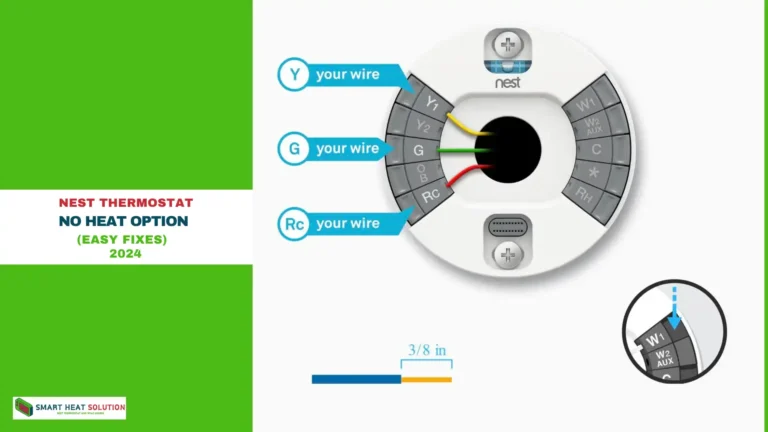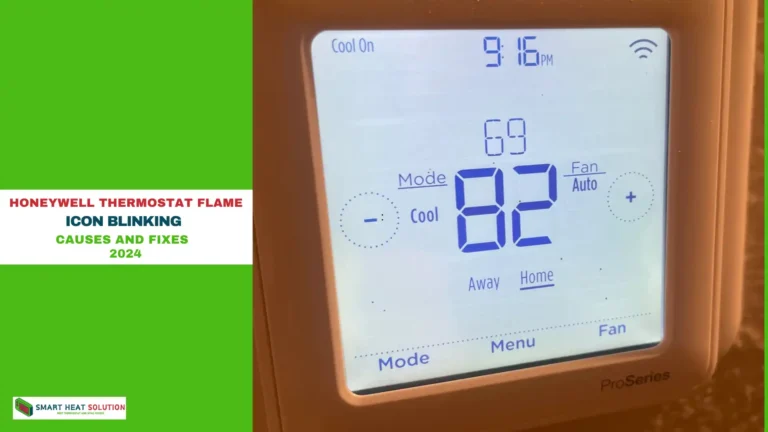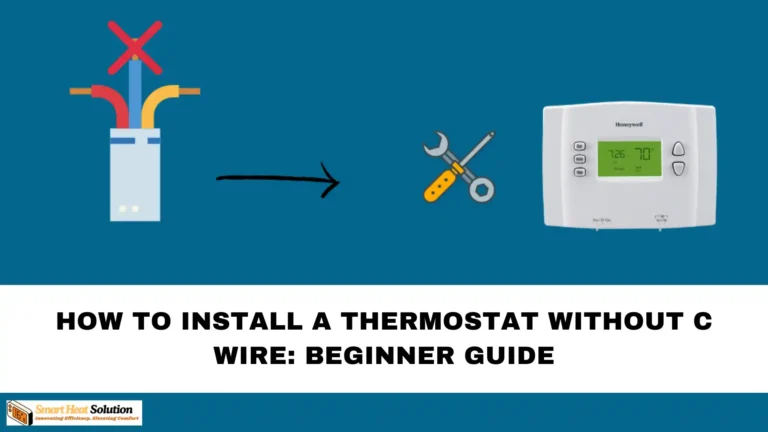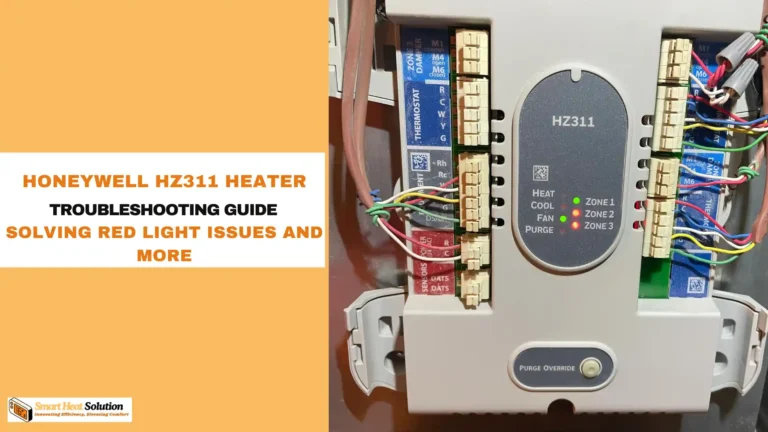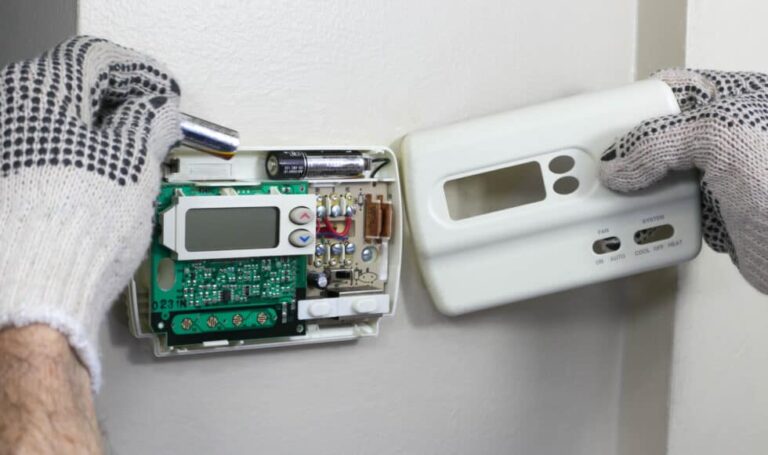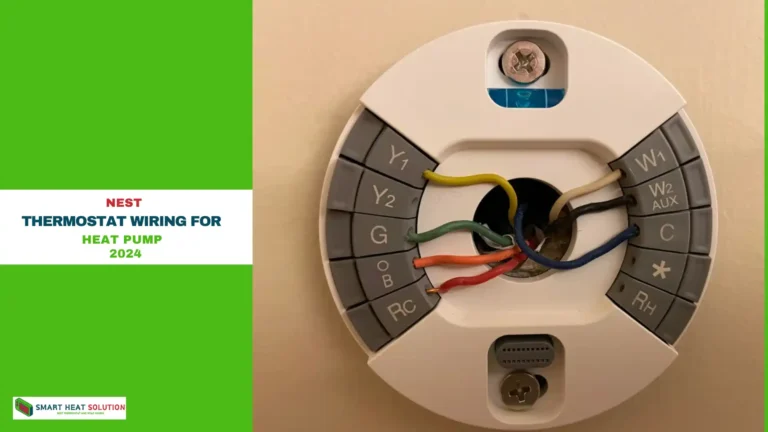Emerson Thermostat Troubleshooting: Common Issues and Solutions
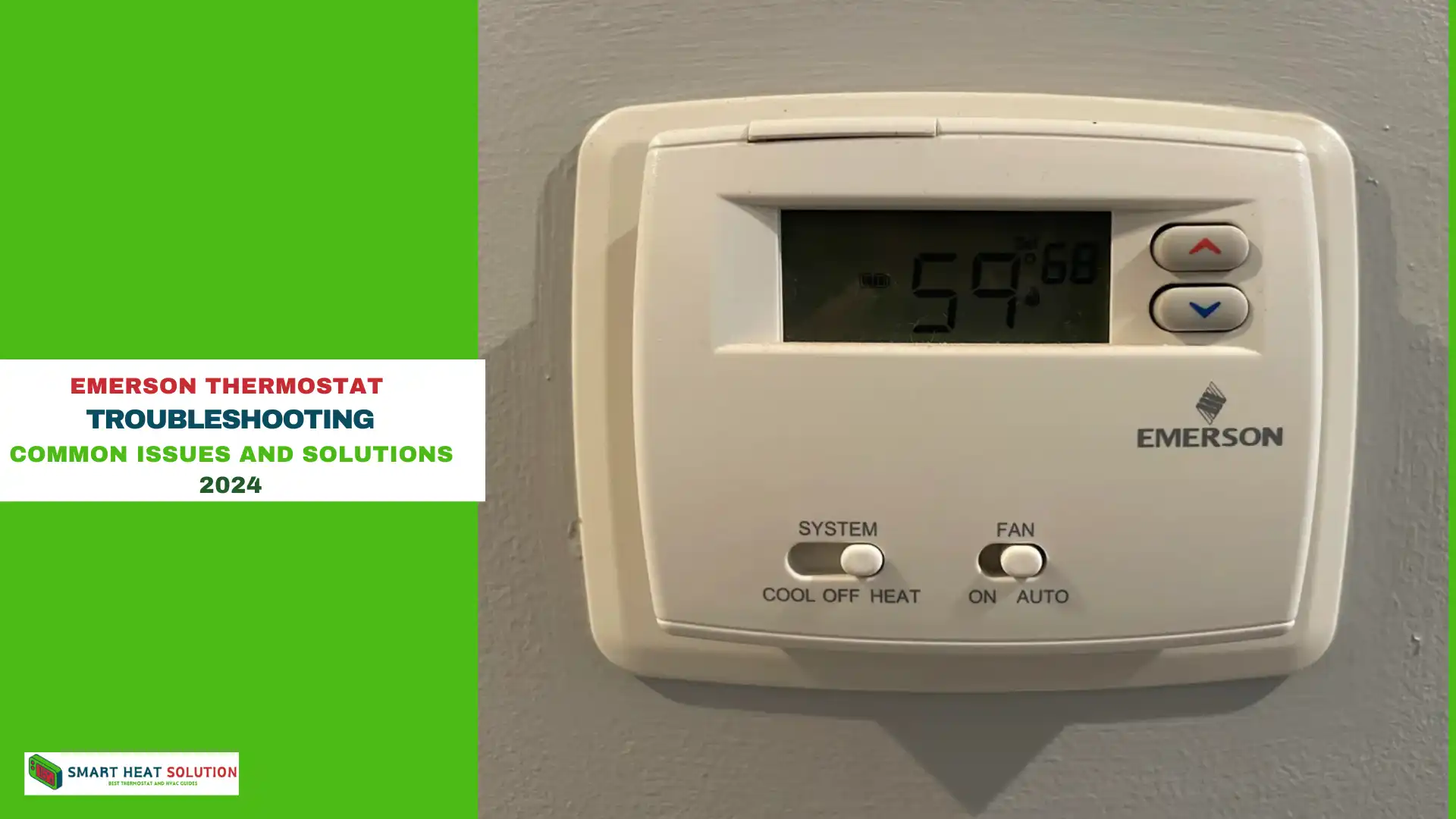
As a homeowner, you rely on your thermostat to keep your home comfortable year-round. Emerson thermostats are a popular choice known for their reliability and ease of use.
However, like any device, they can occasionally experience issues. In this article, we’ll explore common Emerson thermostat problems and provide step-by-step troubleshooting tips to help you get your thermostat back up and running.
Common Emerson Thermostat Issues
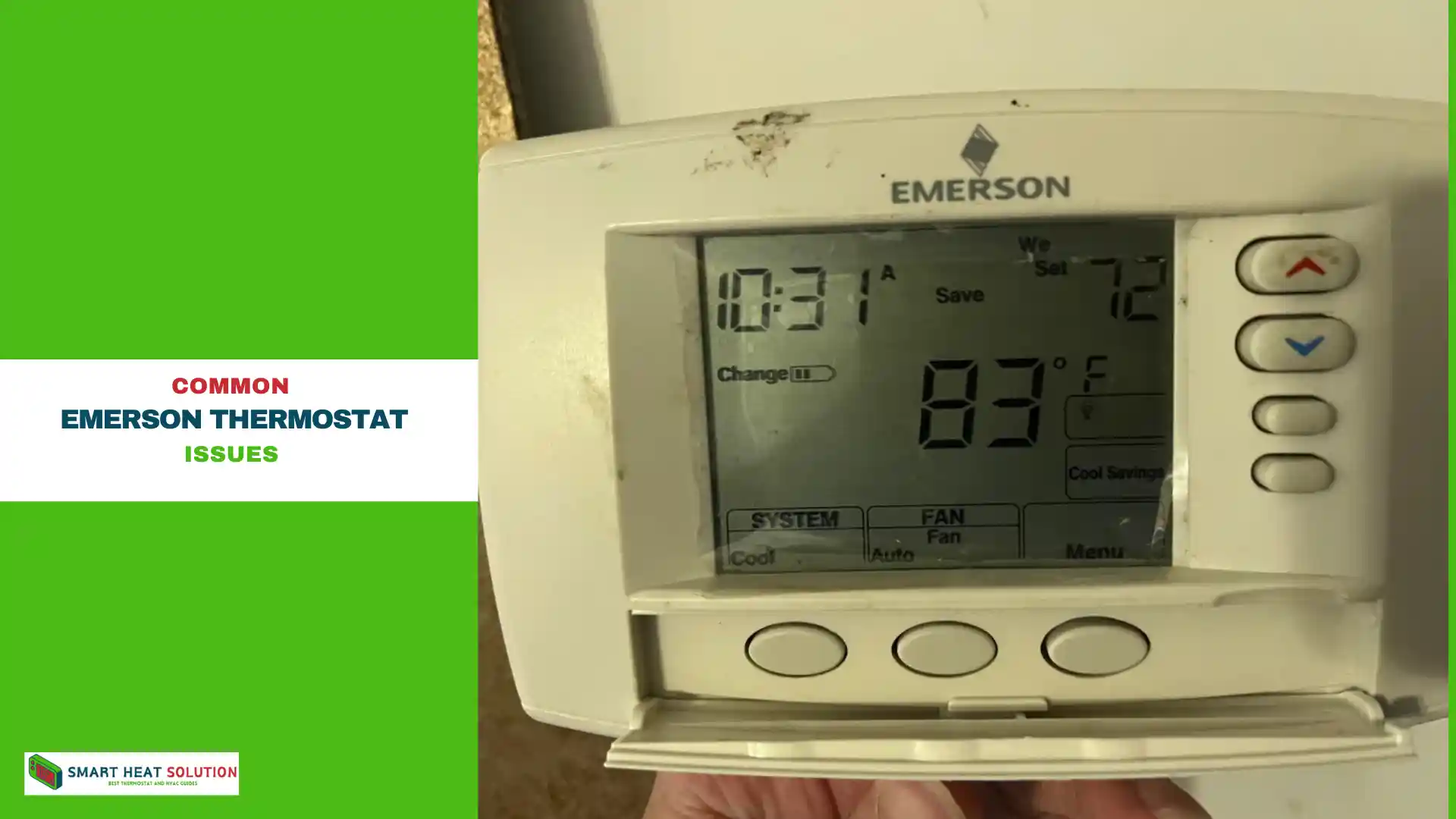
1. Thermostat Not Turning On
If your Emerson thermostat won’t turn on, the first thing to check is the power source. Make sure your thermostat is receiving power from either batteries or your home’s electrical system. If battery-powered, try replacing the batteries with fresh ones. If wired, check that the circuit breaker hasn’t tripped and that all wiring connections are secure.
2. Inaccurate Temperature Readings
If your thermostat is displaying inaccurate temperatures, it may need calibration. Thermostats can drift out of calibration over time, causing them to read temperatures incorrectly. You can calibrate most Emerson thermostats yourself using the user manual instructions.
Another reason for inaccurate readings could be thermostat placement. If your thermostat is located near a source, such as direct sunlight or an air vent, it may read temperatures higher than actual room temperature. Ideally, place your thermostat on an interior wall away from heat sources for accurate readings.
3. Thermostat Not Responding to Settings Changes
If you’ve changed your thermostat settings but your HVAC system isn’t responding, there could be an issue with wiring connections. Check that all wires are securely connected to the correct terminals on your thermostat and HVAC system.
If wiring isn’t the issue, try resetting your thermostat. The process for resetting varies by model, so consult your user manual for specific instructions. Resetting can often resolve communication issues between the thermostat and HVAC system.
4. HVAC System Not Turning On
If your HVAC system won’t turn on at all, start by checking your home’s circuit breaker box. A tripped breaker could be preventing power from reaching your HVAC unit. If the breaker hasn’t tripped, check your furnace door switch. Most furnaces have a safety switch that prevents operation when the door is open.
Dirty air filters can also prevent your HVAC system from turning on. A clogged filter restricts airflow, causing your system to work harder and potentially shut off to prevent overheating. Check and replace your air filter if it appears dirty.
5. Wi-Fi Connectivity Issues
Symptoms
- The thermostat cannot connect to the Wi-Fi network.
Troubleshooting Steps
- Restart the Thermostat: Power cycle the thermostat by turning it off and back on.
- Check Network Settings: Ensure the correct Wi-Fi credentials are entered. Reconnect to the network if necessary.
- Distance from Router: Ensure the thermostat is within range of the Wi-Fi router. Consider relocating the router or using a Wi-Fi extender.
Initial Steps Before Troubleshooting Your Emerson Thermostat

Before diving into technical troubleshooting for your Emerson thermostat, it’s important to start with some basic checks. These initial steps can help you identify simple issues that are often easy to fix, saving you both time and effort.
Check Power Supply
The first step is to ensure your thermostat is powered. A lack of power can lead to various problems:
- Check the Display: Is the thermostat’s display lit up?
- Circuit Breaker: Verify that the circuit breaker hasn’t tripped.
- Batteries: Ensure the batteries are fresh and installed correctly.
If the display is blank, replace the batteries. If the circuit breaker is tripped, reset it. These simple checks can resolve many common issues.
Verify Thermostat Settings
Incorrect settings can lead to thermostat malfunctions. To verify your settings:
- Set the thermostat to the desired mode (heat or cool).
- Ensure the temperature setting is accurate.
- Check the fan setting; it should be set to “Auto” or “On.”
- Double-check the programmed schedule, as an incorrect schedule can cause unexpected temperature fluctuations.
Starting with these initial steps can help you quickly identify and resolve simple issues with your Emerson thermostat.
Simple Fixes for Everyday Problems
While Emerson thermostats are generally reliable, they can experience minor issues that often have straightforward solutions. Here are some easy fixes you can try.
Resetting the Thermostat
A reset can often resolve various problems. Follow these steps to reset your Emerson thermostat:
- Locate the reset button on your thermostat.
- Press and hold the button for about five seconds.
- Release the button and wait for the device to restart.
- Check if the thermostat operates correctly now.
Cleaning the Device
Dust and dirt can impact your thermostat’s performance. Regular cleaning can enhance functionality. Here’s how to clean your Emerson thermostat:
- Turn off the power to prevent electric shock.
- Gently remove the thermostat cover.
- Use a soft brush to remove dust and dirt.
- Check that the wire connections are secure.
- Replace the cover and turn the power back on.
Routine cleaning can help prevent many common issues. Always handle the device carefully during cleaning.
Quick Problem-Solving Table
| Problem | Solution |
|---|---|
| Thermostat not responding | Try resetting the thermostat |
| Display not clear | Clean the device |
| Temperature not accurate | Check and clean the sensors |
Battery Troubles and Solutions
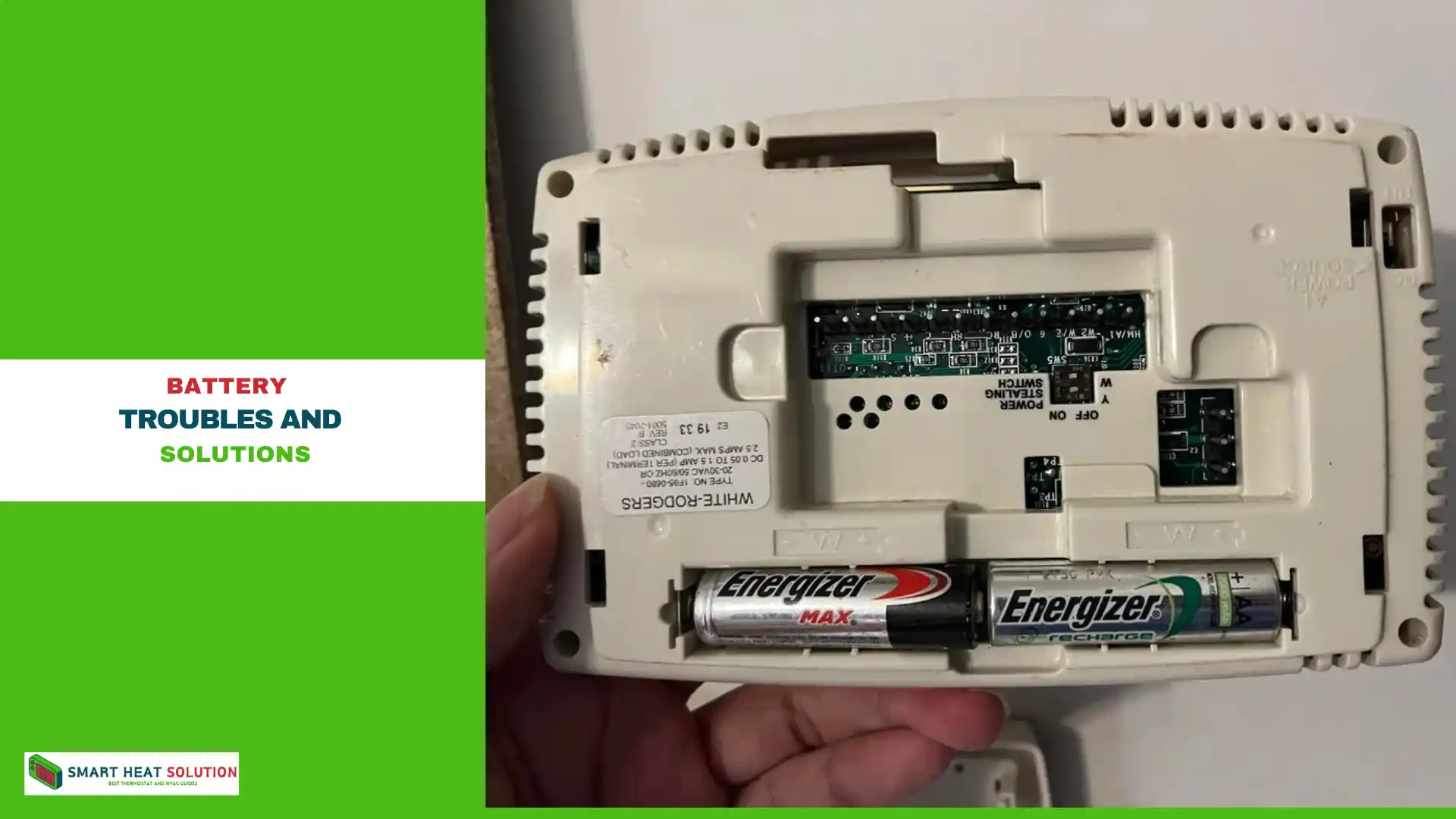
While Emerson thermostats are dependable, battery-related issues can occur. This guide will help you address common battery problems.
Replacing Batteries
If your Emerson thermostat stops working, it may be due to dead batteries. Replacing them is straightforward:
- Remove the thermostat cover.
- Locate the battery compartment.
- Take out the old batteries.
- Insert new AA or AAA batteries, depending on your model.
- Ensure the positive and negative ends match the markings.
- Replace the thermostat cover.
Always use fresh batteries, as old batteries can leak and cause damage.
Battery Corrosion Issues
Corroded batteries can lead to thermostat malfunctions. Look for white or greenish residue on the battery contacts. If you find corrosion, follow these steps:
- Remove the corroded batteries.
- Clean the battery compartment with a cotton swab dipped in vinegar.
- Dry the compartment with a clean, dry cloth.
- Insert new batteries, ensuring correct orientation.
- Use a soft brush to remove stubborn corrosion—never use water, as it can damage the thermostat.
Solving Common Programming Challenges with Emerson Thermostats
Emerson thermostats are celebrated for their reliability and user-friendly design. However, users occasionally encounter programming challenges that can impact performance. This guide addresses two prevalent issues: Setting the Correct Time and Date and Adjusting the Schedule.
Setting the Correct Time and Date
Accurate time and date settings on your Emerson thermostat are essential for optimal heating and cooling schedules. Follow these steps to ensure your thermostat is set correctly:
- Press the Menu button on the thermostat.
- Use the arrow buttons to navigate to Settings.
- Select Set Time/Date.
- Adjust the time and date using the arrow buttons.
- Press Save to confirm your settings.
Be sure to select the correct AM or PM and double-check the date format (MM/DD/YYYY).
Adjusting the Schedule
Optimizing your thermostat schedule can lead to significant energy savings and increased comfort. Here’s how to adjust the schedule on your Emerson thermostat:
- Press the Menu button.
- Navigate to Schedule.
- Select Edit Schedule.
- Use the arrow buttons to set your preferred times and temperatures.
- Press Save to confirm your adjustments.
Consider setting different schedules for weekdays and weekends, ensuring that they align with your daily routine. Regularly reviewing your schedule can greatly enhance both comfort and energy efficiency in your home.
Temperature Calibration Tips
While Emerson thermostats are known for their precision, there are times when temperature readings may seem inaccurate.
Proper calibration ensures that your thermostat maintains correct temperature readings, saving energy while keeping your home comfortable.
Calibrating Temperature Sensors
To calibrate the temperature sensors, follow these steps:
- Check the current temperature reading on your thermostat.
- Compare this with a reliable thermometer.
- Identify any discrepancies.
- Access the thermostat settings.
- Locate the calibration option.
- Adjust the temperature setting to match the thermometer.
Ensure that the thermostat is positioned away from direct sunlight, drafts, and heat sources, as these can affect accuracy.
Testing Calibration Accuracy
After calibration, it’s essential to test the accuracy of your thermostat:
- Allow the thermostat to adjust.
- Recheck the temperature reading.
- Compare it again with the thermometer.
- If necessary, make further adjustments.
- Repeat until the readings align.
Regular calibration is key to maintaining an efficient Emerson thermostat, ensuring both comfort and energy savings.
Resolving Connectivity Issues with Smart Thermostats
Smart thermostats enhance your home’s comfort, but they require a stable internet connection. If you experience connectivity issues, follow these troubleshooting steps:
Wi-Fi Connection Problems
Wi-Fi issues can hinder your Emerson thermostat’s performance. Try these solutions:
- Restart your thermostat: Turn it off and then back on.
- Check your Wi-Fi connection: Ensure it is functioning properly.
- Move closer to the router: Reducing distance can improve signal strength.
- Update firmware: Ensure your thermostat is running the latest software.
- Secure your Wi-Fi password: Use a strong password without special characters.
Smart Home Integration
Integrating your thermostat with smart home systems can enhance its functionality. If integration fails, consider these steps:
- Check compatibility: Ensure that your devices are compatible.
- Update apps: Use the latest version of your smart home applications.
- Reset connections: Re-establish the connection between your thermostat and smart home system.
- Consult manuals: Refer to the user manuals for detailed instructions.
By addressing these common programming challenges, you can ensure your Emerson thermostat operates effectively, maximizing both comfort and energy efficiency in your home.
Consult your thermostat’s user manual for model-specific instructions.
When to Call a Professional
While many thermostat issues can be resolved through DIY troubleshooting, some problems require professional assistance. Call an HVAC technician if you experience:
- Electrical issues, such as tripped breakers or frayed wiring
- Persistent problems that don’t improve after troubleshooting
- Annual HVAC maintenance tasks, such as cleaning coils anerant levels
An experienced HVAC technician can diagnose and resolve complex thermostat and HVAC system issues safely and efficiently.
Preventative Maintenance
Regular HVAC maintenance can prevent many thermostat issues and extend the life of your heating and cooling system. While some maintenance tasks require a professional, there are several DIY tasks you can perform:
- Change your air filter every 1-3 months
- Clean your thermostat regularly with a soft, dry cloth to remove dust and debris
- Keep your thermostat away from heat sources and direct sunlight
- Test your thermostat batteries regularly and replace them as needed
By performing these simple tasks, you can keep your Emerson thermostat and HVAC system running smoothly for years to come.
Conclusion
Emerson thermostat troubleshooting doesn’t have to be overwhelming. By understanding common issues and knowing how to resolve them, you can keep your home comfortable and your energy bills low. Remember to check power sources, calibrate your thermostat, and ensure proper placement for accurate temperature readings. If you encounter persistent issues or complex electrical problems, don’t hesitate to call a professional HVAC technician for assistance. With regular maintenance and timely troubleshooting, your Emerson thermostat will provide reliable temperature control for years to come.
Frequently Asked Questions
- How often should I replace my thermostat batteries? Replace your thermostat batteries at least once a year, or as soon as you see a low battery warning on your thermostat display. Always use fresh, high-quality alkaline batteries for best performance.
- Can I use my Emerson thermostat with any HVAC system? Emerson thermostats are compatible with most residential HVAC systems, including gas, oil, electric, and heat pump systems. However, it’s important to choose a thermostat model that matches your system’s specific requirements, such as voltage and wiring configuration. Consult an HVAC professional or your system’s user manual for compatibility information.
- Why is my Emerson thermostat display blank? A blank thermostat display usually indicates a power issue. Check that your thermostat is receiving power from batteries or your home’s electrical system. If battery-powered, replace the batteries with fresh ones. If wired, check for a tripped circuit breaker or loose wiring connections.
- How do I know if my thermostat is accurate? To check your thermostat’s accuracy, place an accurate thermometer near your thermostat and wait 15-20 minutes. Compare the thermometer reading to your thermostat display. If the readings differ by more than one degree, your thermostat may need calibration or replacement.
- What should I do if my Emerson thermostat is still not working after troubleshooting? If your Emerson thermostat continues to malfunction after troubleshooting, it may be time to call an HVAC professional. A trained technician can diagnose and resolve complex issues safely and effectively, ensuring your thermostat and HVAC system are working properly. In some cases, thermostat replacement may be necessary.

I’m Alan William’s, the founder of SmartHeatSolution.com. I am from California, USA, I’m passionate about innovative heating technologies and their impact on our homes and businesses. With a background in electrican and home repair , I aim to make smart, energy-efficient heating accessible to everyone. When I’m not writing, I’m likely interested in all the thermostat brands and their new technnology. Thanks for stopping by!

